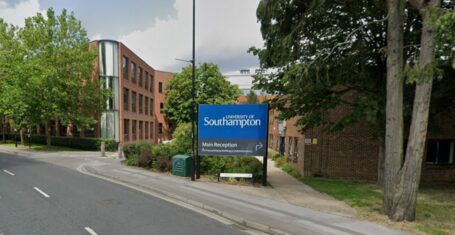
Why is Southampton's Social Media Visibility Score So Low, LSE?
I remember once someone placed traffic lights on a lane near where I lived. For once, there was construction work due to the floods last winter that had blasted the […]
I remember once someone placed traffic lights on a lane near where I lived. For once, there was construction work due to the floods last winter that had blasted the road until it was twisted, as if there were an earthquake.
Yet this was all pointless. No cars ever came along this road apart from the occasional tractor. This is important, for the farmer and a few other farmers had demanded the work from the local council, thus taking a team from elsewhere where work was needed more urgently. Hence the main road coming through my village is a jungle track.
What this story will demonstrate is how crazy this new Social Media Visibility study is. Created by Horst Joepen at the London School of Economics and published yesterday, he took the twenty top Russell Group Universities (which includes us; it really was an April Fools’ joke) and gave them a score based on their Facebook statistics.
The publication is immediately flawed. To be begin with, where are the fast growing former polytechnics that are zooming up the league tables due to the strength of teaching and, increasingly, research, particularly within more niche areas such as Transport and Construction. Looking at the top ten richest (amuse yourself), you whizz past the usual suspects, such as Cambridge or Glasgow, then you notice the University of Central Lancashire. In the places below the top ten, you have universities such as UWE and London South Bank with a lot of real estate. And with wealth you attract students. Freebies at university fairs are better at the former polytechnics than the red brick, and there are more adverts in places other than Facebook used more for university research, such as the Student Room.
He also only uses Facebook statistics. Why? Facebook’s average age is on the rise! According to this report, in the data quoted from 2010, the average age is 38, with 60% of the 40+ age group having Facebook on the site. Even though the adverts target those who have searched universities or are between 16 and 25, the students are increasingly becoming the minority, as their parents are attracted by games and pictures of my cousin on a sabbatical (he’s 27. Never too late people!).
And why is Southampton so low? We can accept that we are quite a long way from other places. A Southampton student is a special sort of breed. Not even a Margaret Thatcher death riot to be seen. How on earth did we find out about the university?
In my experience, as a fresher, I found out about the university by accident. I chose it on a whim, because I wanted to go to Manchester, which is a larger university (and higher on the list). Perhaps I saw an elusive Southampton advert, for my cousins come from Southampton, but I suspect I really did choose it because I watched Titanic.
Who on earth looks at these adverts? You might like the university’s page on Facebook and read the promotions popping up like an elderly relative giving you a sloppy kiss.
The biggest problem for me, though, is that it was standardised for university size. I must be crazy, but surely the university size is due to GOOD MEDIA EXPOSURE? If not, then social media visibility is not important, and this man from LSE should consider that the LSE has a lot of exposure due to a.) it is the best route into banking, a popular profession, and b.) Unfortunately, this….and this







































